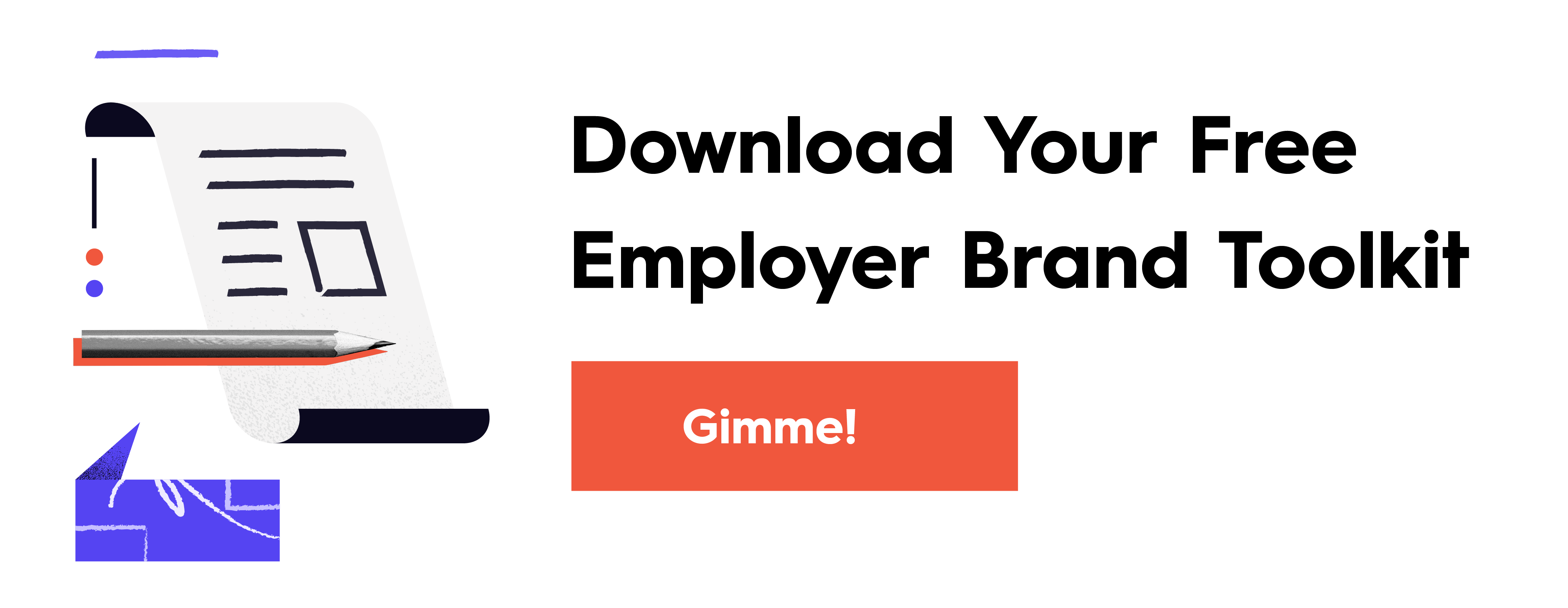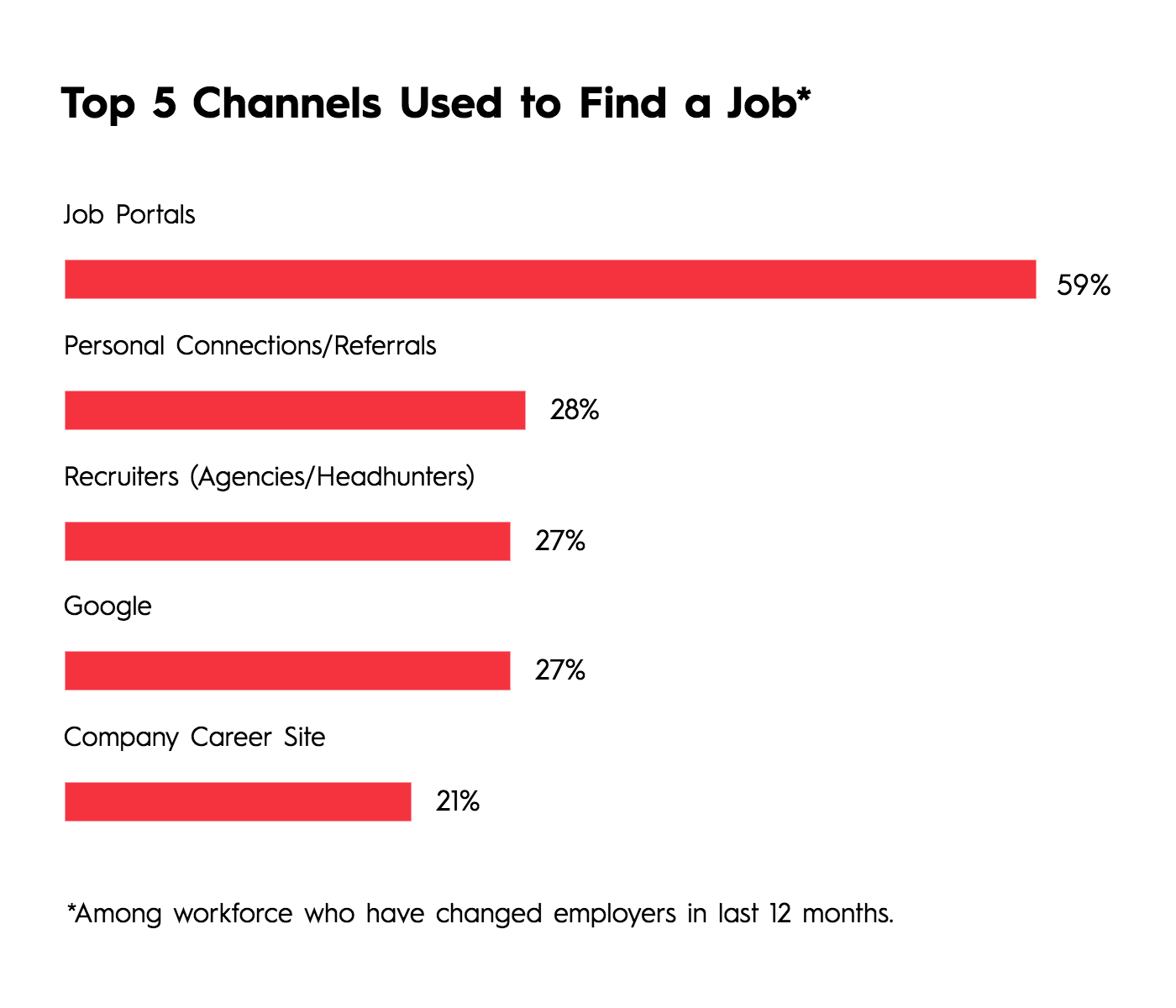No matter how great your employer brand is, if you’re not active in the right channels, you won’t be able to reach the candidates you want, engage with the employees you have, or build the reputation you deserve.
Visibility is everything, but too many brands don’t properly optimize the channels they’re in—or strategize which channels might be best for them. It’s understandable. There are a ton of options, and with limited time and resources, it can be challenging to know where to put your energies. That’s why we’re taking the guesswork out of the game.
Here, you’ll find a breakdown of the various employer brand channels so you can curate a mix that will get the results you want. From the big guys to the small guys, we’ll help you identify the best way to promote and grow your employer brand across the Internet.

What to Know Before You Start
Before we dive into the various employer brand channels and how they can help you, you need to approach planning with an understanding of your own brand’s needs. Start by asking these key questions:
- Who are you trying to reach?
- What is your goal (e.g., general awareness, more diverse applicants)?
- How well-known is your employer brand already?
- Are you trying to hire a specific niche or group/position?
- What kind of roles are you hiring for (e.g., lower or higher level)?
- How many open positions are you hiring for?
- What type of content do you regularly produce?
- How frequently do you produce content?
You may have other unique needs to consider, too. Ultimately, it’s better to start with fewer channels and grow from there, so keep your goals in mind as you figure out what to prioritize.
Employer Brand Channels: The Breakdown
To give you the insight you need to find the right channels, we’ve broken everything down into three main groups:
- Social: These are traditional social channels to promote your brand, and build and maintain relationships with prospective, current, and former employees.
- Job boards: These are places to post openings and engage with prospective candidates.
- Employer branding: These are places to promote your brand, showcase your unique traits, etc.
All three of these groups have some crossover, as platforms are continually increasing their capabilities. But we’ve used these categories to help you understand what options are out there, how much effort is required, and what you can expect to pay.
Remember that you don’t have to maintain a presence on every platform possible. Choose the places and tools that will help you connect with the candidates you’re looking for.
[bctt tweet=”A good employer brand isn’t active on every channel; it’s active on the right channels. ” username=”columnfive”]

Source: HubSpot Employer Brand Research 2020
1) Social
Your brand’s own social properties are a particularly powerful tool in promoting your employer brand. If you know where your potential candidates are most active (say, Instagram vs. Twitter), focus on utilizing those channels to promote your content, showcase your brand, and encourage engagement.
65% of companies were able to increase their brand recognition from employee advocacy posted on social media platforms.
Instagram is a visual platform, so it’s the ideal way to humanize your brand and really “show” people who you are.
- Good for: Giving people a peek at your day-to-day work, engaging with employees, and showcasing your brand personality.
- Cost: Free to set up a business account; ads are paid.
- Level of effort: Low to high, depending on the level of content production. Consistency is what matters most. Whether you’re sharing photos, videos, snapshots of company culture, or employee-generated content, it’s a great place to promote organic content that people relate to.
Example: Hootsuite uses their Instagram to promo both their product and employer brand, with behind-the-scenes looks into their culture and daily life.
Just like you promote your product or service on Facebook, you can also promote your employer brand. You might even consider creating a separate page just for it. Facebook is the most versatile because it allows you to create longer posts than Twitter and longer videos than Instagram, and you can easily share external links, so it’s a great place to publish a mix of employer brand content.
- Good for: Giving people a well-rounded sense of who you are by sharing behind-the-scenes content, employee spotlights, thought-leadership, employee-generated content, etc.
- Cost: Free to set up a business account; ads are paid.
- Level of effort: Low to high, depending on your commitment. It’s great for longer-form content, visual content (e.g., photo, video, graphics), etc.
Example: Hulu has its own Life at Hulu Facebook page, where their “Hulugans” showcase the team’s volunteer efforts, Hackathons, and more.
Twitter is a great platform to engage with prospective and current employees, keep up on trends, contribute to conversations, and maintain a general presence.
- Good for: Interacting with niche communities, starting conversations, answering questions, showing your brand personality.
- Cost: Free to set up a business account; ads are paid.
- Level of effort: Low to mid. Twitter success relies on consistent engagement to maintain a presence.
Example: Zappos created their own employer brand-specific Twitter page (@ZapposCulture) to showcase their brand. It features employee-generated content and other fun stuff.
It’s more than just a box for us! #EmployeeEngagemen #Zappos #CompanyCulture #CX #WFH #WOWServicehttps://t.co/fIo0WCnKWJ
— Zappos Culture (@ZapposCulture) August 21, 2020
We have a new coloring book just in time for the weekend! Send us your finished color pages! We’d love to share them. Find volume two here: https://t.co/L3c7pqkpug
?
Here is a coloring page from the first edition, from one of our followers on Instagram! #ColoringZapposAdaptive pic.twitter.com/te7wjoS8Er— ZapposAdaptive (@ZapposAdaptive) July 25, 2020
LinkedIn is one of the more popular sites to help people find jobs. If you’re invested in building your employer brand, this is the place to do it (and you probably already are). LinkedIn is a combination of pretty much everything you need: an employer branding site, traditional social media, and a job board. That said, it shouldn’t be the only site you use.
- Good for: Creating a brand presence, connecting with current employees and alums, posting jobs, targeting and communication, learning about hiring trends and data, sharing content and company updates, building industry communities, and networking.
- Cost: Free, but certain elements are paid (e.g., upper and lower funnel ad products, recruiter tools, talent flows, and hiring trends).
- Level of effort: Mid to high. You can make it your own and manage in a limited capacity, or devote an entire team to it. The more you do, the better your results will be.
Example: Dropbox’s LinkedIn features a variety of content that gives people an insider look at both the company’s culture and product updates.
2) Job Boards
There are dozens of job boards, ranging from wide-reaching to niche boards specific to an industry, region, or group (e.g., women in tech). While this is not an exhaustive list, these are some of the main ones you should know about. Of course, you should also research similar offerings in your own industry.
Monster & Indeed
As some of the largest and most popular job search platforms on the Internet, these sites are a great place to grow your general employer brand awareness.
- Good for: Helping you tap into a large applicant pool, promoting open positions, and reaching a vast audience at a low price.
- Cost: Paid packages based on the number of roles you are posting.
- Level of effort: Low, though remember that you’ll be receiving a lot of applications. Because of its mass popularity, expect a large amount of applications—many of which will be less than ideal candidates.
Fairygodboss
This is a female-centric job board and employer branding site to connect with millions of women.
- Good for: Checking company reviews on gender equality, posting jobs, targeting and communication for recruiters, building a company profile, sharing company content.
- Cost: Paid subscription to claim a profile and get started.
- Level of effort: Mid, as you’ll want to tailor your content for the audience.
Stack Overflow
For tech brands, Stack Overflow is an open community for developers/software engineers to apply to jobs and network.
- Good for: Posting jobs, promoting ads for your site, and building a profile for brand storytelling.
- Cost: Paid membership.
- Level of effort: Mid, as you’ll want to actively engage with people on the platform.
IMdiversity
This is a great job board for companies focused on finding a more diverse talent pool—beyond the traditional channels and employee referrals you might usually hire from.
- Good for: Hiring diverse candidates.
- Cost: Paid.
- Level of effort: Low; you just need to upload your roles and create a company profile.
3) Employer Branding Sites
Prospective employees are always curious about what brands are like behind the scenes, which is why Glassdoor has become such an important site. Even if you’re not managing your company page, former and current employees (as well as candidates you’ve interviewed) are already rating and reviewing your company, so it’s smart to have a strong, authentic presence on the platform.
- Good for: Creating a brand presence (via a profile), managing your company reputation, communicating with passive and active candidates, posting jobs, and sharing company content and news.
- Cost: Free for companies, but you’ll have to pay to gain access to certain metrics and data. Ad platforms are also part of a paid service.
- Level of effort: Mid to high. You can make it your own and manage in a limited capacity. If you focus on ad management and developing targeted pages, the workload can become much larger. Like LinkedIn, the more you do, the better your results will be.
Note: Collecting reviews is the most important part of this platform. Follow Glassdoor’s guidelines for tips to do it efficiently.
Glassdoor and LinkedIn are the two platforms you must have a presence on. Even if you just start with these two, they’ll provide a solid foundation to grow your brand.
The Muse
The Muse is an employer branding site and career platform that candidates use to learn more about prospective companies.
- Good for: Developing a brand identity on a newer platform, posting jobs, and sharing brand stories from a third party.
- Cost: Paid.
- Level of effort: Mid to high, depending on the package you choose. With a paid partnership, you can work with The Muse writers to get articles published about your brand.
Comparably
This employer branding site allows candidates to compare one employer to another.
- Good for: Showcasing your brand’s strength, creating and sharing company content, and general recruiting efforts.
- Cost: Paid packages based on your needs.
- Level of effort: Mid to high, depending on the package you choose.
A Few More Options to Consider
Beyond traditional platforms, look for other ways to promote and showcase your employer brand, such as:
- Award sites
- Roundups of great places to work
- Recruitment events
Remember: Promotion Is Just One Part of the Challenge
No matter what platforms you choose, the key to success is having an employer brand that is worth promoting. For more tips to nurture your brand…
- See our complete guide to build your employer brand.
- Follow our tips to build your company culture, (and your remote culture).
- Use these 50 tools to help you grow your employer brand.
- Learn how to write a compelling employer value proposition, and experiment with these 10 ways to tell your employer brand story.
And if you need help along the way, let’s talk about how we can bring your employer brand to life.





